Bunaken
Marine Park
 Bunaken National Park is a marine park in the north of Sulawesi island, Indonesia. The park is located near the centre of the Coral Triangle, providing habitat to 390 species of coral as well as many fish, mollusc, reptile and marine mammal species. The park is representative of Indonesian tropical water ecosystems, consisting of seagrass plain, coral reef, and coastal ecosystems.
Bunaken National Park is a marine park in the north of Sulawesi island, Indonesia. The park is located near the centre of the Coral Triangle, providing habitat to 390 species of coral as well as many fish, mollusc, reptile and marine mammal species. The park is representative of Indonesian tropical water ecosystems, consisting of seagrass plain, coral reef, and coastal ecosystems.
It was established as a national park in 1991 and is among the first of Indonesia’s growing system of marine parks. It covers a total area of 890.65 km², 97% of which is marine habitat. The remaining 3% of the park is terrestrial, including the five islands of Bunaken, Manado Tua, Mantehage, Nain and Siladen. The southern part of the Park covers part of the Tanjung Kelapa coast.
Bunaken Island has volcanic origins with a significant amount of uplifted fossil coral. At the west and central part of Bunaken Island (71m high) there is a flat plateau about 5Om above mean sea level (msl). Nain Island is also a dome-shaped island, 139m in height and with a slope of 20-40″. Mantehage Island is relatively flat and seems to be sinking into the sea. The island has extensive mangrove forest flats, partially separated by saltwater channels. Siladen is a low-lying coral sand island with no significant topography. Arakan-Wawontulap and Molas-Wori on the mainland of North Sulawesi are relatively flat areas at the base of volcanic hills.
The park has unique bathymetry which is an attraction for divers. The absence of a continental shelf in the northern part of North Sulawesi allows the coastal area of the park to drop directly down the continental slope. The sea depth between the islands of the park is 200-1,840m deep. In the coral ecosystem alone, Bunaken National Park covers an area of 89,095 hectares. The larger North Sulawesi area (also possessing potential for fbture inclusion in this WH site) contains approximately 280,000 ha.
The marine national park area is home to thousands of different species of fish, coral, endangered marine mammals and reptiles, birds, molluscs and mangrove species. The Sanghie-Talaud island chain immediately to the north of the national park area is equally diverse (440 species from 52 sites in 2.3 million hectares). The uniqueness of Bunaken and the wider North Sulawesi area is its density of diversity in close proximity to a growing and populous part of Indonesia.
 Geology
Geology
North Sulawesi is considered to be a young formation, of 5–24 million years of age. The region has undergone explosive volcanism 1.5–5 million years ago, which resulted in the volcanic tuff that characterizes the existing topography. Manado Tua is an inactive volcano formed in a classical cone shape and rising over 600 m above sea level, the highest elevation in the park.
Bunaken Island also has volcanic origins with a significant amount of uplifted fossil coral. Nain Island is also a dome-shaped island, 139 m (456 ft) in height. Mantehage Island is relatively flat and seems to be sinking into the sea. The island has extensive mangrove forest flats, partially separated by saltwater channels.
Siladen is a low-lying coral sand island with no significant topography. Arakan-Wawontulap and Molas-Wori on the mainland of North Sulawesi are relatively flat areas at the base of volcanic hills. The absence of a continental shelf allows the coastal area of the park to drop directly down the continental slope. The sea depth between the islands of the park is 200–1,840 m (660–6,040 ft).
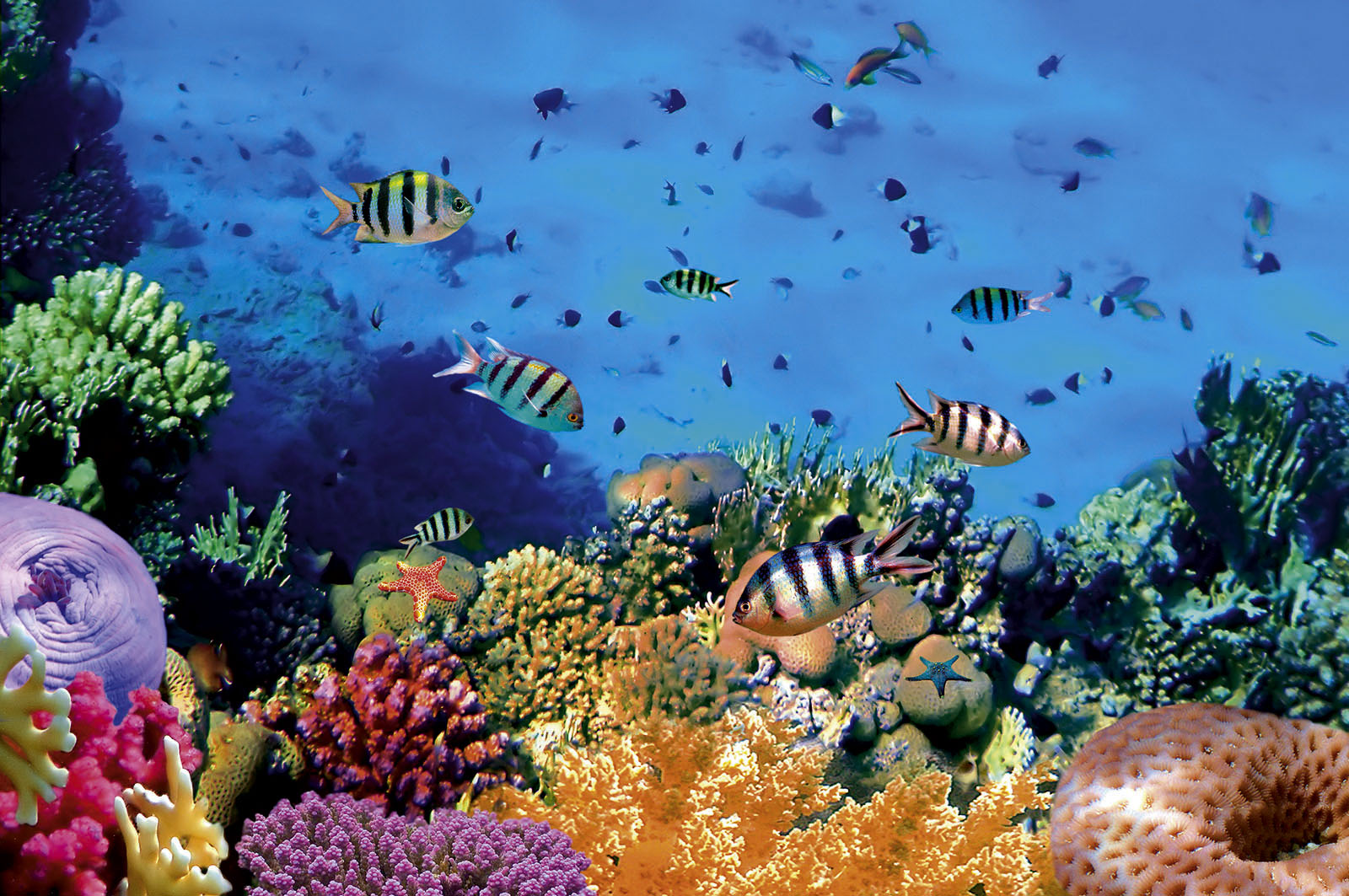 Flora and fauna
Flora and fauna
A very rich coral ecosystem covers most of Bunaken National Park, dominated by fringing reef and barrier reef corals. There are about 390 species of coral recorded in the waters of the Park. A distinct feature is a 25-50 metre vertical coral wall which is inhabited by 13 coral genus.
The seaweeds that can be found here include Caulerpa, Halimeda, and Padina pavonica species, while the dominant seagrasses, in particular in the islands of Montehage and Nain, are Thalassia hemprichii, Enhallus acoroides, and Thalassodendron ciliatum. The park is also abundant in different species of fish, marine mammals and reptiles, birds, molluscs and mangrove species.
About 2000 species of fish live in the waters of the park, among them being the emperor angelfish, Almaco jack, spotted seahorse, bluestripe snapper, pinkish basslet and two-lined monocle bream. The species of mollusc include the giant clam, horned helmet shells, chambered nautilus, and ascidians.
It is claimed that this park has seven times more genera of coral than Hawaii, and more than 70% of all the known fish species of the Indo-Western Pacific.
On land, the islands are rich in species of palm, sago, woka, silar and coconut. Among the animal species that live on the land and the beaches are Celebes crested macaque, Timor Deer, and Sulawesi bear cuscus. The mangrove forest of the Park contains, among others Rhizophora and Sonneratia species. This forest is also rich in species of crab, lobster, mollusc, and sea birds such as gulls, herons, sea doves, and storks.
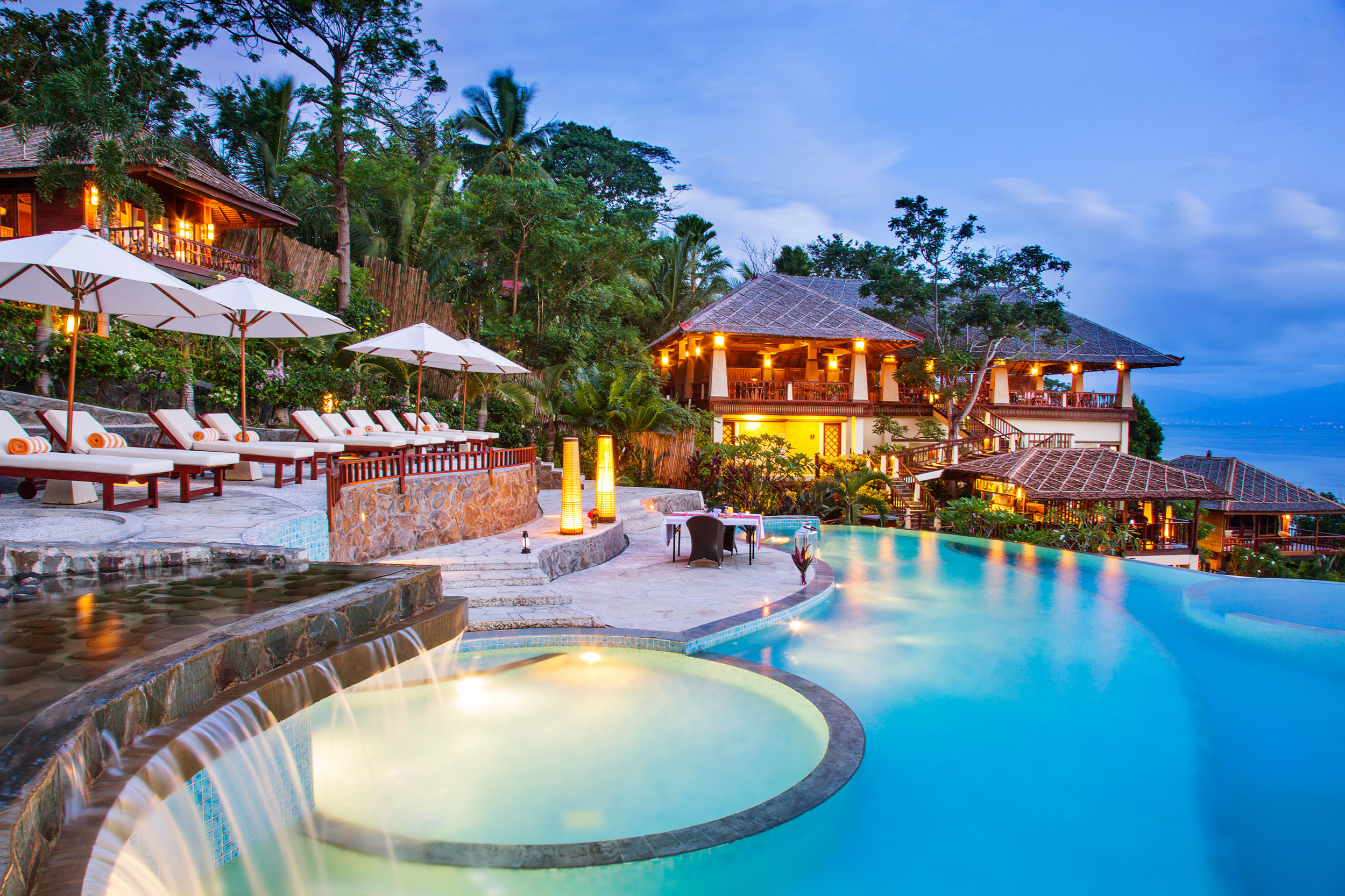 Human habitation and tourism
Human habitation and tourism
The area is densely populated, with 22 villages inside the park comprising about 35,000 people. Most locals work as fishermen or farmers cultivating coconut, sweet potato, banana or seaweed for export, while a small number are employed in tourism as dive guides, boat operators and cottage staff.
Tourism is strongly developed, with accommodation ranging from backpacker cottages to 5 star resorts. Between 2003 and 2006 the number of visitors ranged from 32,000 to 39,000 of which 8,000–10,000 were international visitors for each year.
Scuba diving and snorkelling are the main activities pursued by tourists visiting the park, with the diving in Bunaken being world renowned. It is home to the winner of the World Travel Awards’ “Indonesia’s Leading Dive Resort 2019” and “Indonesia’s Leading Dive Resort 2018”, the Bunaken Oasis Dive Resort & Spa.
Conservation and threats
Bunaken National Park was formally established in 1991 and is among the first of Indonesia’s marine parks. In 2005 Indonesia submitted an application to UNESCO for including the park on the World Heritage List. Despite its national park status and significant funding, the park has suffered a slow, continuous degradation due to a number of threats including coral mining, anchor damage, blast fishing, cyanide fishing, diving, and trash. The World Wildlife Fund provides conservation support in the National Park as part of the Sulu Sulawesi Marine Eco-region Action Plan. This includes participatory enforcement and patrol, which resulted in significant reduction of blast fishing.
 Route to Bunaken National Park
Route to Bunaken National Park
Bunaken National Park is located in Manado Bay, North Sulawesi. There are many modes of transportation to choose from to arrive in the city of Manado. By plane, the first arrival was at Sam Ratulangi International Airport in Manado city.
Arriving in the city of Manado, go to the port of Marina Blue Banter or Marina Nusantara Diving Center (NDC) in Molas sub-district. From Marina Blue Banter, it will take about 30 minutes to get to Bunaken Island, then another 10 – 15 minutes to the dive site. Meanwhile, if you depart from the NDC, it will only take 20 minutes.
In addition, there is another alternative to Bunaken Island, namely renting a boat from Marina and Pasar Bersehati, a 40-minute journey. One boat can load up to 15 people and boat rental prices range, approximately USD 150 per boat. You can choose a Catamaran ship which is attached to the middle of a large transparent glass so you can start enjoying the underwater scenery while traveling to Bunaken Island.
Best time to visit Bunaken National Park
We recommend that you plan a visit to Bunaken around May to August because the sea water conditions are the clearest so that the diving visibility can be maximized and the temperature is warmer.
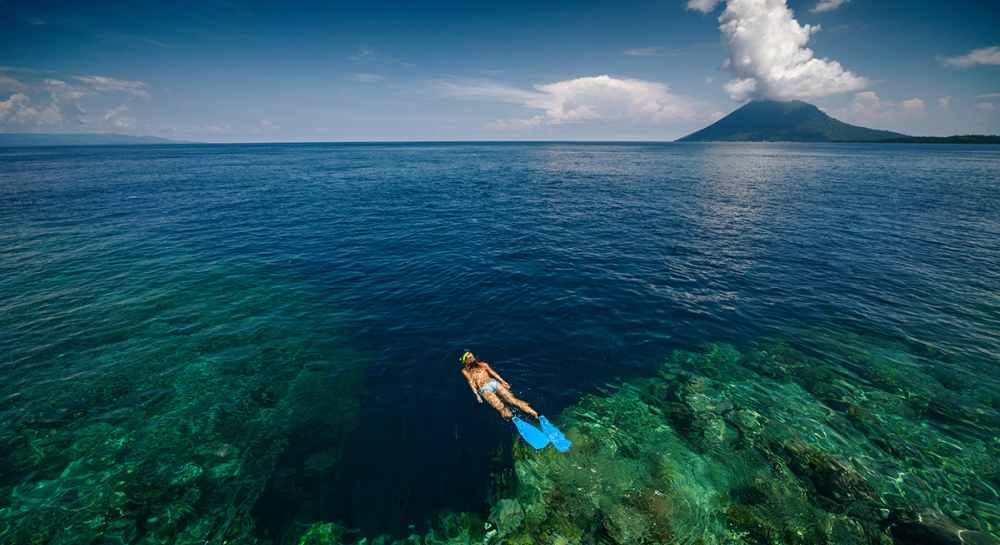 If you visit from July to August, it is better to prepare for the trip in advance because it is the peak of the holiday season. Visiting Bunaken from December to January is not the right decision. Sea water is in high tide and tends to be dirty due to garbage carried by the currents.
If you visit from July to August, it is better to prepare for the trip in advance because it is the peak of the holiday season. Visiting Bunaken from December to January is not the right decision. Sea water is in high tide and tends to be dirty due to garbage carried by the currents.
Bunaken National Park entrance fee
To enter the Bunaken National Park area, you only need to spend IDR 5,000 for domestic tourists. Meanwhile, foreign tourists are charged a fee of around USD 12. Apart from the entrance ticket, for those who want to snorkel and dive there is a separate fee that must be paid. If you want to snorkel, it costs around USD 12. per hour to rent diving equipment such as masks and frog legs. For diving, you need an extra fee of USD 80. One more thing, it is incomplete if your diving moment is not immortalized, you can rent an underwater camera for around USD 14 only.
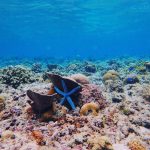

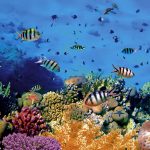
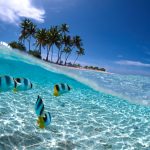
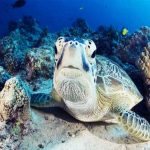
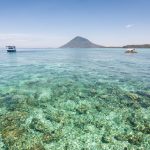
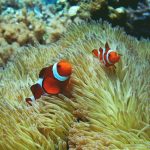
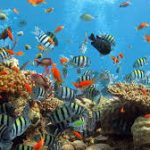
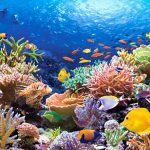
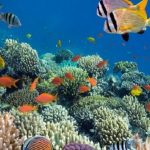
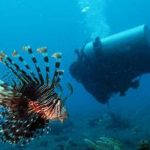
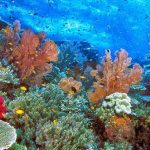












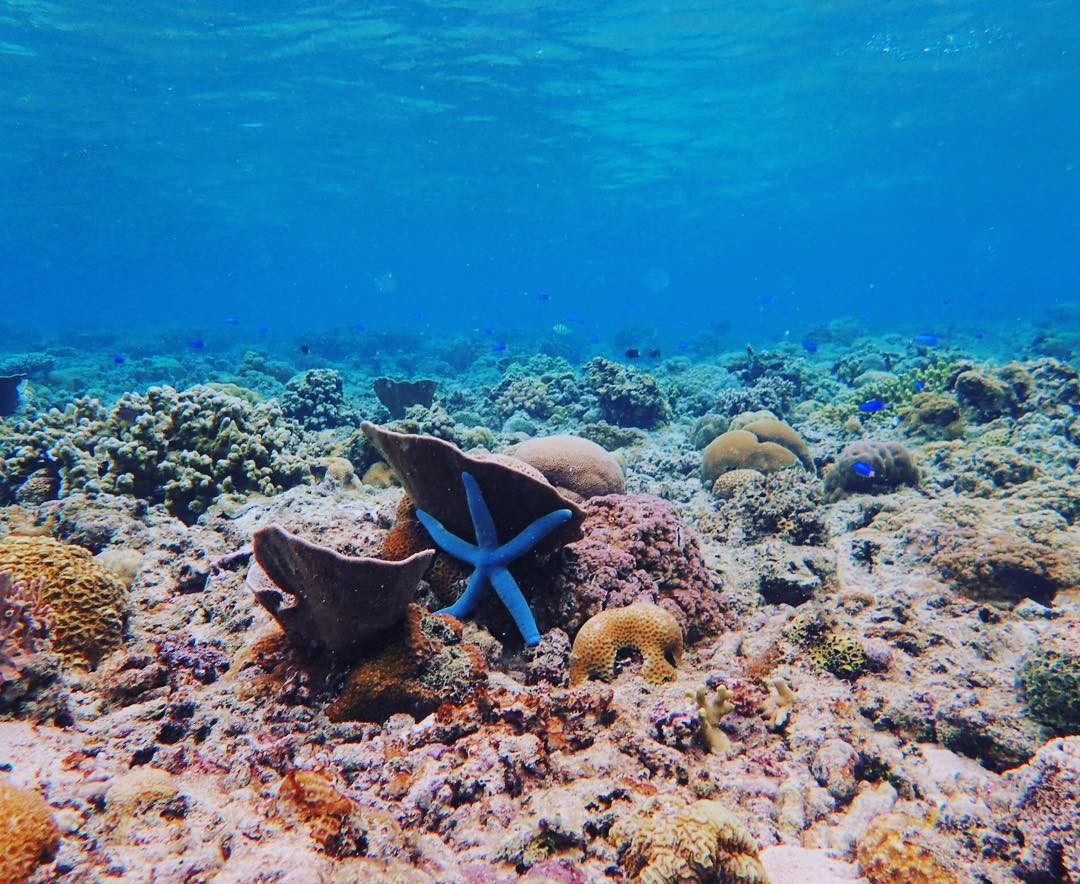 Interesting Tourist Spots in Bunaken National Park
Interesting Tourist Spots in Bunaken National Park
Bunaken Island is located in the “Golden Triangle”, which is called the “Golden Triangle” because it is a sea route that connects the seas of Indonesia, Papua and the Philippines. Because of this, Bunaken is home to thousands of fish species and has a very rich coral reef ecosystem.
To enjoy the amazing underwater charm, there are at least 20 dive points in Bunaken National Park, 12 of which are located on Bunaken Island itself. Some of them are as follows:
Bunaken Timor : The best recommended dive point for Bunaken is Bunaken Timor. The first thing to note is that Bunaken Timor has strong underwater currents, so be careful. Get ready to be hypnotized by the view of coral reefs and many species of fish that swim here and there with you.
If you’re lucky, you can see eagle rays, sharks, turtles and several other large fish species you can find here. Not only that, there are small underwater caves that are no less amazing.
Mandolin :The next dive spot in Bunaken is Mandolin. Here, you will find many fish that live in groups such as unicornfish, surgeonfish, bannerfish and gunfish. Even in large groups, these fish are docile, so it’s very safe to approach. In addition, you will also be treated to views of the walls and peaks of rocks that are naturally formed.
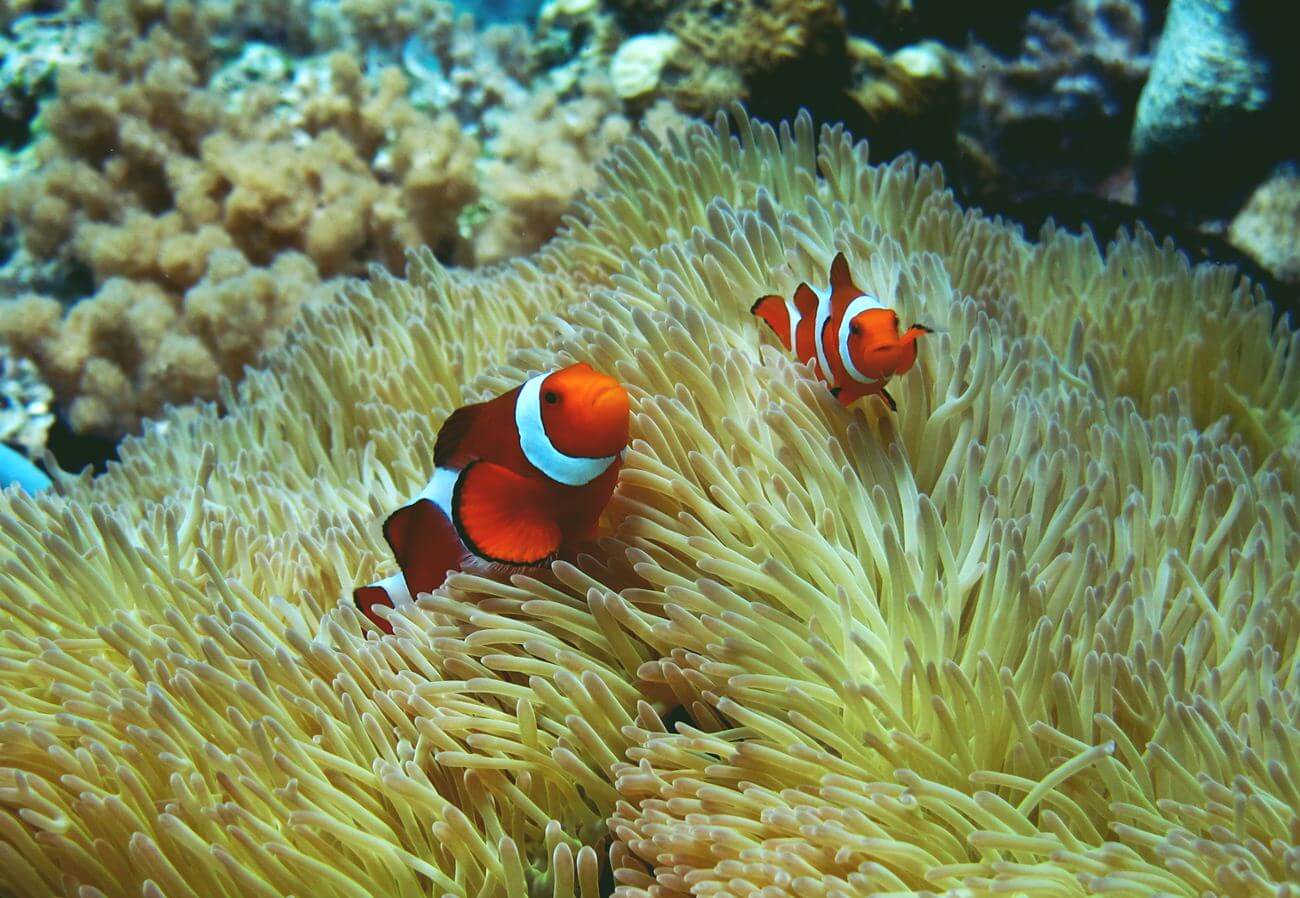 Front of the Church : The next best spot that will blow your mind is the Church Front. This spot has a charming view of the marine park. When clear sea water brushes against your feet, you will realize that you can still see cute colorful fish even in the shallow waters.
Front of the Church : The next best spot that will blow your mind is the Church Front. This spot has a charming view of the marine park. When clear sea water brushes against your feet, you will realize that you can still see cute colorful fish even in the shallow waters.
Besides that, you must be familiar with nemo fish, right? The front of the Church is the perfect place to meet them. If you’re lucky, you can also get a bonus to see a tip reef shark in an underwater cave.
Barracuda Peak : Can be guessed from the name, Puncak Barracuda will spoil you with the view of the large barracuda fish swimming freely in the middle of tuna and jack fish. The peak of this Barracuda is a current that is formed because of its position which is alternating between sandy areas and coral reefs. Located in the northwest of Bunaken Island, this spot should be the best diving spot in Bunaken National Park.
Siladen : If you come to Bunaken for snorkeling, you have to go to Siladen. Siladen has a depth that is not too deep so you don’t need special swimming techniques to be able to snorkel here. Here you will be treated to the exoticism of soft and beautiful coral walls. Here, you can see a variety of fish, including Moorish Idol, Butterflyfish and others. Anyway, Siladen is a snorkeling spot in Bunaken that cannot be missed.
